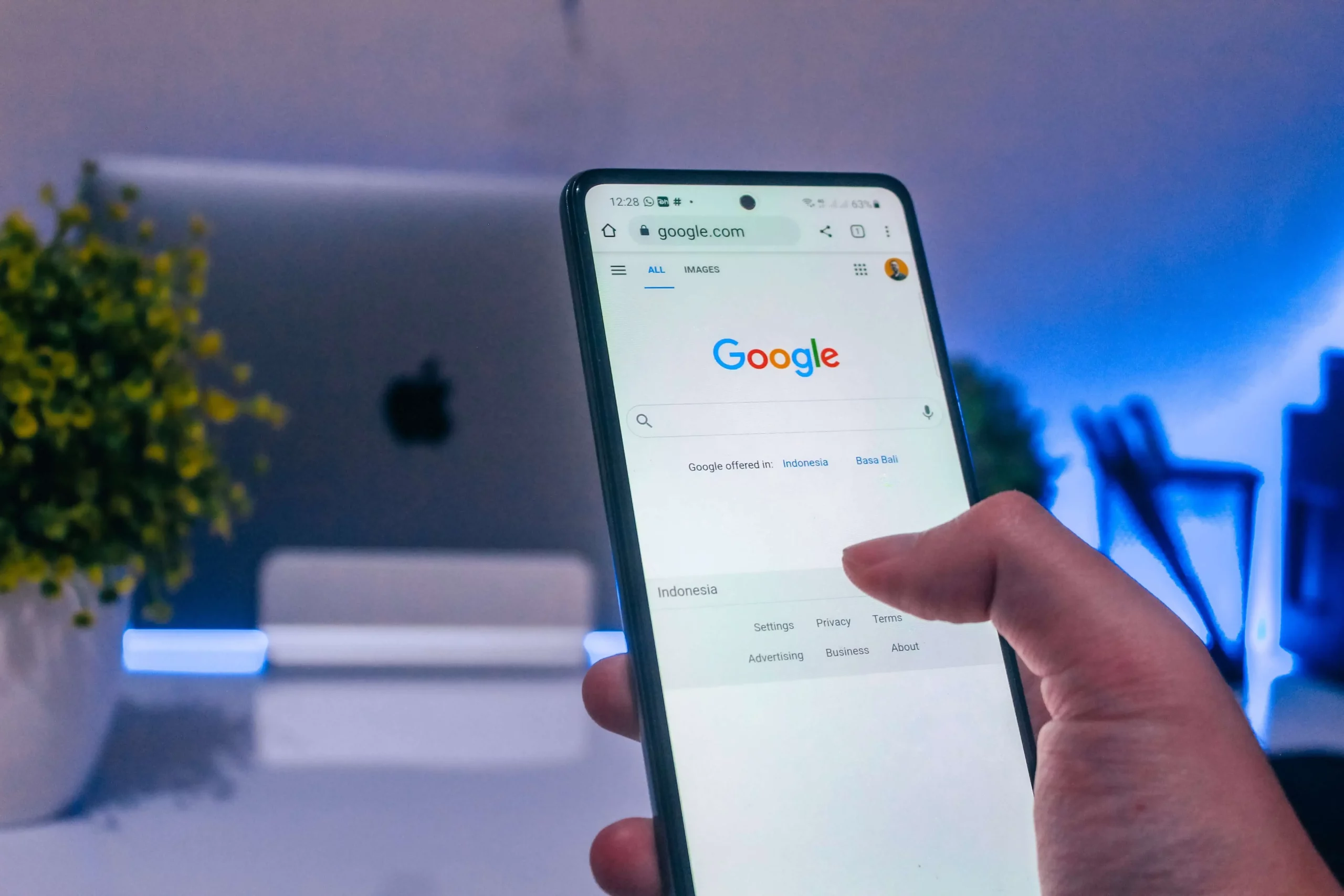CORNERSTONES
TO BUILD A SUSTAINABLE WEBSITE PRESENCE.
REACH YOUR WEBSITE GOALS WITH INSIGHTS FROM THE BONUS WRITER BLOG.
Blog post length is a question that presses on the minds of many business owners. The right blog post length is critical for search engines and engaging readers.
At a time when attention spans are shortening, it’s tempting to create shorter posts. However, longer and more informative posts are best for blog posts.
Balancing consideration for an optimized blog post length that enhances your website’s SEO performance while keeping your audience engaged can be overwhelming.
THE WORD COUNT-SEO CONNECTION
Understanding the relationship between word count and SEO is essential. While there’s no one-size-fits-all answer, search engines tend to favor longer content when it provides value.
After researching your keywords and topic, list what phrases or words you want to include in your blog. Also, create a list of internal or external links that support the content.
As you begin to structure your content, you will likely find that your word count is higher than anticipated. Posts become longer when they incorporate keywords, phrases, internal and external links, and other SEO elements.
The more relevant, helpful content you provide, the more value you provide to your readers while enhancing your ranking potential.
BALANCING LENGTH AND USER EXPERIENCE
Content organization, such as the use of headings, subheadings, and listicles, improve the user experience. To keep readers engaged, ensure the content is scannable and flows in a logical format.
For example, don’t be intimidated by white space. When you incorporate space between elements and sentences, the reader quickly scans and finds the desired content for which they are searching.
ALIGN GOALS TO DETERMINE POST LENGTH
The purpose of the content guides the choice of post length. Begin by determining the goal of your blog post.
For example, are you providing instructions on how to complete a task? Are you providing a top-ten list for readers to consider before purchasing a service or product? Or is the post focused on entertaining readers or shedding new insights?
Providing specific instructions may create a lengthy post of valuable content, while a top-ten list may be more straightforward. Opinion pieces may vary in length based on the topic’s relevance at publication time.
UNDERSTAND YOUR READERS’ EXPECTATIONS
If you are a seasoned blogger, examine the expectations that you have set for your readers. In other words, your readers may be confused or disappointed if you typically write 1,500 word blog posts but suddenly produce a few that range between 300 and 500 words.
It’s helpful for new businesses to complete competitor research to understand what readers are used to seeing in that industry. For example, most posts will be 1,500 words or more in copywriting. Attracting new readers away from established blogs is much more likely when you exceed the typical word count.
ADVANTAGES OF VARIOUS BLOG POST LENGTHS
Crafting Short Blog Posts (Up) to 500 Words
Short blog posts, often up to 500 words in length, are concise and to the point. They provide a quick and easily digestible read, catering to busy readers who seek instant information or updates. These posts typically lack extensive details, making them ideal for sharing brief announcements or industry news.
Benefits of Short Posts
Short posts offer multiple advantages for businesses seeking an active online presence. They ensure improved readability, with content that can be scanned in seconds, making it easier for users to find the information they need quickly.
Often, such posts convey time-sensitive information, such as event announcements or breaking news. Their brevity also encourages higher click-through rates and social media sharing, a vital aspect of modern content promotion.
STRIKING THE BALANCE WITH MEDIUM-LENGTH BLOG POSTS (800-1200 WORDS)
Medium-length blog posts, typically ranging from 800 to 1200 words, offer a balance between depth and conciseness. They are perfect for delivering valuable insights and detailed information without overwhelming your audience. These posts are often used for how-to guides, product reviews, or thought leadership pieces.
Advantages of Medium-Length Posts
Medium-length posts hit the SEO sweet spot, offering enough content to satisfy search engine algorithms while engaging readers effectively.
Their extended length lets you comprehensively cover a topic, establishing your authority within your niche. This balance helps keep readers on your page, reducing bounce rates, and potentially boosting conversion rates.
THE POWER OF IN-DEPTH, LONG-FORM BLOG POSTS (OVER 1500 WORDS)
Long-form blog posts that exceed 1,500 words are the cornerstone of content marketing strategies for many successful businesses. These posts dive deep into topics, providing in-depth analysis and extensive information to educate and engage the audience.
Benefits of Long-Form Posts
Long-form posts offer superior SEO performance because they provide helpful, relevant content that often ranks for long-tail keywords. They are instrumental in establishing thought leadership and domain authority, setting you apart from competitors.
To create long-form posts effectively, thorough research and citations are essential. Managing reader attention throughout these lengthy articles is crucial, achieved by using clear and engaging writing and strategically placed visuals.
CONCLUSION
Short, medium, and long-form content have their place in any effective SEO strategy. Each length offers distinct advantages, catering to different objectives and audiences.
If you’re starting out, consider medium length blog posts of 800 words or more. As you gain confidence or as you see the need to boost that number based on your competition, you can adjust the word count.
The two most important takeaways are: 1. Start now. Don’t delay—start building your online credibility today; and 2. Quality content is the cornerstone of online success.

READ THE POST
The Latest
You likely have heard of Google Business Profile (formerly Google My Business). GBP is a free platform where your business is verified so that you may claim and optimize your GBP listing.
If you own a business, creating this profile is the first step. Get started at https://google.com/business.
Once your listing is verified and published by Google, you can begin to collect reviews. With the prevalence of hackers and illegitimate companies, Google’s requirements to post your listing are more stringent than ever. It’s worth the effort, however. Think of it as your best free SEO (at least for now).
Google reviews represent to Google that your business is authentic, and the number of legitimate reviews received can improve your rankings. Here are tips to respond to reviews and to avoid having your Google reviews penalized:
- Encourage satisfied customers to leave reviews on your Google listing. Google will assign you a unique URL to share with customers to obtain reviews. Admins on your account can access your URL to share. THIS IS THE URL YOU WANT TO GIVE YOUR CLIENTS. See below for information on potential violations you want to avoid.
- You can offer this URL in several ways, including a QR code that you can use on business cards and other marketing materials. You may also share that link through email or social media.
- Set up alerts for new reviews and respond to every review, both positive and negative. Ideally, respond to reviews within 24-48 hours. Be kind and concise; lengthy responses can deter readers. Responding demonstrates your commitment to customer service and engagement.
- Maintain a polite and professional tone in your responses. Thank them, express your enjoyment in working with them, and use keywords for your business in your response if you can do so naturally and sensibly. For example, include keywords such as your services, location, or products.
- Negative reviews are inevitable for most businesses, as you will never please everyone. When addressing negative feedback, acknowledge the issue, apologize for any inconvenience, and offer a resolution if possible. Plus, anyone reading the review can see additional information you provide about the transaction. Responding promptly, fairly, and kindly as possible may turn a negative experience into a positive one.
- If you get an inappropriate review or one that violates Google’s policies (e.g., spam, offensive content, or unrelated to your business), report it for removal.
- If a customer initially leaves a negative review, but you resolve the issue to their satisfaction, kindly ask them to update their review to reflect the positive outcome. You cannot delete Google reviews, but your clients can edit or delete reviews that they submit. Google may delete reviews that are verified to be fraudulent.
Avoid Violations
Posting fake positive reviews or trying to manipulate your review ratings can lead to severe consequences, including having your Google listing removed or penalized.
Always encourage genuine feedback from real customers.
Why Review Gating is Controversial
In 2018, Google stated in its policies: “Don’t discourage or prohibit negative reviews or selectively solicit positive reviews from customers.”
In 2022, the Federal Trade Commission released its own guidelines regarding online customer reviews.
Also in 2022, Google renamed Google My Business to Google Business Profile and users managed profiles through Google Maps. At that time, their policies no longer specified the language above.
Some interpreted this omission that there was no longer a penalty for review gating.
However, as of the publication of this guide, current Google policies explicitly address fake engagement and deceptive content and behavior for businesses.
“Contributions to Google Maps should reflect a genuine experience at a place or business. Fake engagement is not allowed and will be removed.
This includes:
- Paying, incentivising or encouraging the posting of content that does not represent a genuine experience.
- Discouraging or prohibiting negative reviews, or selectively soliciting positive reviews from customers.
- Content that is not based on a real experience and does not accurately represent the location or product in question.
- Content that has been incentivized by a business in exchange for discounts, free goods and/or services. This includes merchant requests for revision or removal of a negative review through offered discounts, free goods or services, or other incentives.
- Content that has been posted by a competitor to undermine a business or product’s reputation.
- Content that has been posted from multiple accounts to manipulate a place’s rating.
- Content that has been posted using an emulator or other device tampering service, modified operating system, or other method to mimic genuine engagement, manipulate sensor data or results, or otherwise thwart or confuse normal operations.”
Source: Google’s Policy on Fake Engagement.
Review gating manipulates a business’s online reputation. Platforms like Google and Yelp have policies against these practices, encouraging businesses to collect reviews organically. Attempts to filter out negative reviews or selectively direct customers to leave positive reviews may lead to penalties or the removal of all reviews, ultimately impacting the credibility of your business and website.
My professional opinion is review gating manipulates a business’s online reputation. With platforms like Google and Yelp creating policies against these practices, I will NOT encourage my clients to participate in review gating.
The best practice is to treat all customer feedback equally and not to influence the process of leaving reviews based on their sentiment. Encouraging genuine feedback is an ethical and sustainable approach to managing online reviews.
READ THE POST

You have poured your heart, soul, and countless cups of coffee into your small business. You turned your passion into a daily hustle and took your leap of faith into the business world. You’re not just a business owner; you’re a dream chaser, a risk-taker. But you’re missing out if your potential clients don’t know […]
READ THE POST

Evergreen content is the little black dress of your online presence – always relevant, timeless, and ready to showcase your best when you need it most.
The roots of evergreen content can be traced back to the early days of the internet, with its widespread recognition as an SEO staple taking hold in the early 2000s.
As the internet continued to expand, businesses and marketers realized the immense potential of creating content that remained perpetually valuable. It offered not only a dependable source of information for audiences but also a steady flow of organic traffic and, subsequently, a higher standing in search engine rankings.
This means that as an entrepreneur or a small business owner, building authority and credibility online for your business is essential.
Let’s delve into what evergreen content is and strategies to create content that builds authority and becomes a go-to for your clients.
What is Evergreen Content?
Evergreen content stands the test of time, providing enduring value to your audience. Evergreen content comes in various forms, serving as the cornerstone of your online credibility.
I always recommend starting with a list of your goals for the content. Then create a list of what problems and what information your clients need.
Once you have that list, consider these options for your pillar content library:
- Informative blog posts are thoughtful posts that educate, inform, and/or entertain your audience. These posts are your digital storytellers, conveying your expertise in a relatable and engaging way.
- Compelling case studies are real-life success stories that boost credibility. Think of case studies as testimonials on steroids that showcase your skills and problem-solving abilities.
- How-To Guides are step-by-step instructions demonstrating your expertise. These guides are the hands-on, actionable side of your content.
- Engaging listicles are curated lists of tips, resources, or recommendations. Listicles offer quick and practical advice, just like the accessories to your little black dress.
The Benefits of Timeless Content
Creating evergreen content is a smart move for your business. The advantages include:
Authority: Evergreen content helps you establish expertise, experience, authoritativeness, and trustworthiness (E-E-A-T) – the vital factors Google values for online success. E-E-A-T is an integral part of any organic SEO strategy. Organic search results determine where your page ranks, with factors such as content quality, page purpose or benefit, and site reputation contributing to your SEO strategy. Learn more about Google’s E-E-A-T guidelines from one of my favorite marketers.
Organic Traffic: Evergreen content is relevant because it addresses the concerns of a wide range of visitors. By addressing your audience’s common problems or concerns, you’ll attract visitors repeatedly by answering their questions or struggles.
Lower Bounce Rates: Evergreen content is valuable content that keeps readers engaged, thus reducing bounce rates and improving user experience.
Long-Term Search Rankings: As evergreen content remains relevant, it signals to search engines that your articles are useful and contain helpful content, improving your search rankings.
Components of Impactful Evergreen Content
Great evergreen content starts with choosing engaging topics that resonate with your target audience. Key elements to consider include:
- Engaging Topics: Topics that resonate with your audience are essential. Understand their pain points and offer practical and relevant solutions to their issues.
- Keyword Optimization: Using relevant keywords is the first step to your content being found, but it should never read like an SEO manual. Use keyword research to find opportunities for appropriate— but not overused—keywords to improve your chances in SERP results.
- Accessible Language: Avoid jargon when possible. Instead, choose your tone to be true to your audience and your brand. For example, a conversational tone makes your content approachable and engaging. A professional style exhibits expertise or formal insights.
- Timelessness: When your content transcends trends, you’re on the right path to providing evergreen content that is relevant and helpful.
- Repurposability: Evergreen content is marketing gold, as snippets can easily be highlighted for social media and other marketing purposes. Think of repurposing content just as your pair your classic black dress with various heels or boots, maximizing the value of your content.
Formats for Helpful Content
Consider formats like “best of” lists, in-depth guides, data-driven research, and industry reports, which have a history of generating evergreen content in specific industry niches.
When selecting content formats, my preference is to prioritize list posts and how-to guides. These formats are the workhorses of evergreen content, offering clear and lasting value to your readers.
Including a year in your content title is a double-edged sword. On one hand, including “2023” in your title reflects relevant and current information.
However, if it’s 2023 and the headline includes tips from 2017, readers will judge it as outdated and readers will scroll past it.
Steer clear of a year in your headline or be prepared to manage it over time. For example, if you create a list of the top marketing trends for 2023, mark your calendar in the fall of 2023 to research and make any necessary updates to your content. Because your content is evergreen, it’s easy to reflect minor changes that are important for the topic. One bonus to this approach is demonstrating you are active in the research, deepening trust that you are providing the best and most relevant information.
Conclusion
Boost your expertise, authoritativeness, and trustworthiness by nurturing your online presence and consistently delivering valuable content. Evergreen content is your steadfast companion in the quest for an organic, first-page ranking on Google.
With the strategies and insights shared here, you’re well on your way to creating evergreen content that is a reliable cornerstone of your online success.
READ THE POST

A solid online presence is non-negotiable for businesses. While social media can be a starting point, having a dedicated website is essential.
Let’s explore why websites are vital for your business, the importance of crafting compelling website copy and design, and the essential pages every website should have.
WHY YOUR BUSINESS NEEDS A WEBSITE
As a business owner, you might wonder if investing in a website is worth the time and investment, especially with the power of social media. However, a well-designed, informative website holds immense value for your business.
Build Credibility and Trust
People expect businesses to have websites. An outdated, disorganized, or unprofessional website can damage your business’s credibility. In fact, studies show that 75% of consumers judge a company’s credibility based on its website design.
Outreach and Expanding Your Online Presence
Your website is a 24/7 extension of your business, accessible to a global audience. It’s your star employee who is never late, presents the best impression of your company, and provides the same level of stellar support to your clients.
Whether you’re a physical store or a service-based company, your website can expand your reach and help potential customers learn more about your products or services.
Control Your Brand
Unlike social media accounts, you have complete control over your website. Remember when Facebook, Instagram, and WhatsApp went down in 2021? Businesses relying solely on social media for advertising and sales lost customer communication.
Ensuring your clients have access to you and your services whenever they wish to engage is critical. I’m not suggesting to dismiss social media. However, all marketing efforts, whether related to social media, email marketing, or paid ads, are more successful with a website that potential and current clients can rely on for any information they seek.
GETTING STARTED
Domain Name
Your domain name is your online identity, so choose it wisely. It’s advisable to opt for an SEO-friendly name. Conduct research before you select a domain provider. Be confident that the provider offers a seamless domain transfer experience if you change website platforms in the future.
Platform & Hosting
There are multiple options for website platforms, ranging from DIY to WordPress to custom websites coded by hand.
If you ask ten different website designers, you will likely receive ten different answers. Even if a couple of them agree on one platform, such as WordPress, it’s likely that there will be a difference of opinion on the theme or the host you should use.
Options include:
- DIY builders are popular because there’s no coding required, t’ey’re affordable, and often include hosting and a SSL certificate. Not all are created equal, however, and can miss the most important fundamentals, such as a responsive site, SEO and analytics integrations, etc.
- WordPress is still the OG of website builders, and it still powers nearly half of the websites out there. But some agency platforms are fiercely competitive with WordPress, and sometimes, even often more robust features. For WordPress, you can DIY or hire a developer. There will be a learning curve if you don’t know WordPress already. Plus, you will need to purchase hosting and an SSL certificate separately. If you use a developer, choose wisely.
- Custom website developers code your website by hand. It’s a substantial investment, and rightfully so. The level of expertise and customization is unparalleled. However, for many new or small businesses, the hefty price tag prevents many businesses from this investment.
You may be wondering right now if it really matters that much if you use a DIY site or one platform over the other.
The answer is yes, it matters. Here are a couple of stats to consider:
The Importance of SSL Certificates
SSL certificates are crucial for website security and SEO. A site with http is a kiss of death for your website. An SSL-secured website begins with “https” signifying a secure connection. Without it, your site will lose trust, causing visitors to bounce away.It’s a no-brainer and considered a must for your site.
CRAFT A WEBSITE WITH SEO AND UX PRINCIPLES
Your website’s success heavily depends on its copy and design quality. Every copwriter out there will give you this piece of advice in some form—ensure you create compelling copy first, and then incorporate the design. Always.
Don’t force your copy to fit into a template; create a design based on your copy. If your website developer insists on sacrificing the quality of your copy to fit a template, find another website developer.
Guidelines for Organic SEO
You have heard of SEO, but it’s okay if you find it confusing. There are different variations of SEO. Here’s a list of SEO options to consider:
- Organic/on-page SEO—high-quality copy & content based on research, structure, scannable text, etc.
- Off-Page SEO—think review platform, backlinks from credible sources
- Local SEO—optimization customized with local keywords
- Technical SEO—site structure, URL structure, page load speeds, mobile performance
- Paid SEO—targeted optimization for keywords through ads
Eventually, you want your website to incorporate all of these options. But for now, let’s focus on where it all starts—the content on your website.
Organic SEO
Organic SEO focuses on optimizing your website to rank higher in search results without relying on paid advertising, resulting in sustainable long-term visibility and traffic. It builds authority and credibility, generates targeted traffic, and offers cost-effective marketing benefits, ensuring consistent visibility and attracting high-quality leads over time.
On-page SEO starts with high-quality content with each page of your website focused on a central keyword, service, product, or subject. Search engine algorithms are more sophisticated than ever, and improper practices like keyword stuffing are unacceptable.
Here are some examples of why organic SEO is important:
Google (Search, Images, Maps) currently holds 92.58% of the total search engine market share.
91.8% of all searches are for long-tail keywords.
Google organic search is responsible for 59.2% of the world’s web traffic
76% of people who search for a local business on their mobile phone visit a related business 24 hours
Guidelines for Optimized Copy
Website copywriting is about more than grammar and spelling; it’s how to define your brand and attract your ideal clients.
You may consider creating your website copy. But keep in mind the time and level of expertise needed to craft your message, such as:
Keyword Analysis and Research
- Keyword Analysis
- Proper Structure
- Various Forms of Research
- Webpage Length
- Internal and External Links
- Title Tags and Meta Descriptions
- Relevant, Helpful Copy
Guidelines for a Seamless UX Experience
A positive user experience (UX) is vital for your website. UX determines how your copy guides your website visitors through a specific journey or how to interact with your product or service. It’s also about creating a positive user experience, including fast loading times, easy navigation, and mobile responsiveness.
UX copy should prioritize addressing user needs, emphasizing the benefits and value they will gain by engaging with your brand or taking specific actions on your website.
Plus, your copy should encourage users to take desired actions, such as making a purchase, subscribing to a newsletter, or contacting your business, by employing persuasive language and clear calls to action. Key components include:
- Easy Flow of Text
- Use of White Space
- Tell Your Story
- Simple, Clear CTAs
- Functionality Check
- Image and Video Optimization
Publish Scared
It’s intimidating to hit “publish” on a new or updated website. Your business will continue to grow and evolve, meaning your website will never be “done.” Don’t fall into the trap of thinking you have to include everything in the beginning.
When it is ready, publish. I’m not suggesting that you settle for good enough…but when it is ready, publish. Even if it’s publishing scared.
Conclusion
Your business website is essential for you, your clients, and the growth of your business. It is the foundation of many marketing campaigns.
Create a website that gives your clients the experience they deserve—and that you CANNOT give them on social media.
READ THE POST

background & credentials
I created TBW to help small businesses find the right words and website platform to create a sustainable website presence.
After launching in 2020, it became clear that my clients often need more than website copy and content—they also need an affordable, effective website solution between DIY website builders that don't perform and custom websites that are expensive (and rightly so!).
So I expanded my copywriting business to include website design as an add-on to website copywriting, so you can maximize your marketing dollars.
Hi, I'm Angel Evitts.
the bonus writer